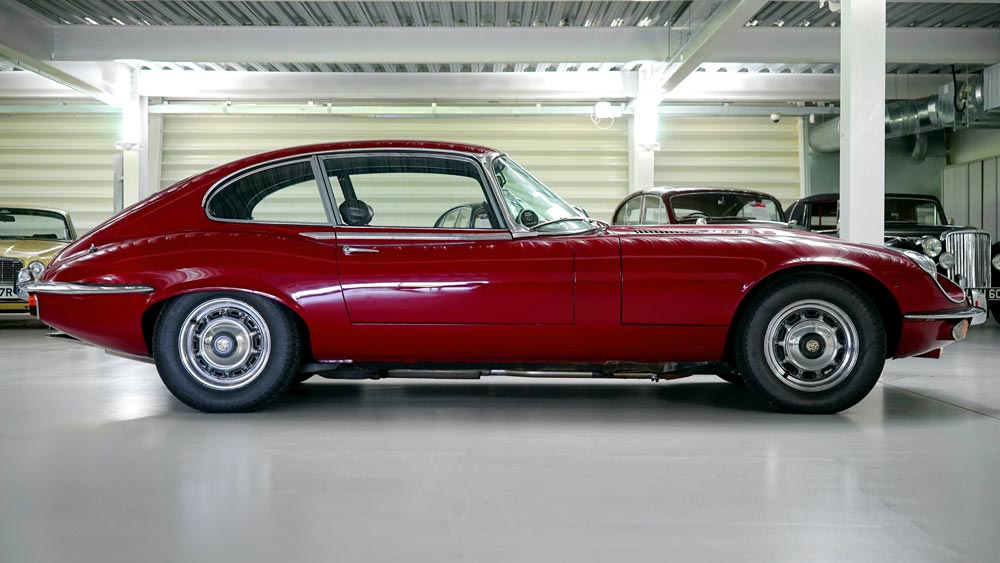Classic cars are beloved investments that should be kept in mint condition through the year. One of the best ways to keep your classic car in top condition is by investing in seasonal or long-term car storage (visit our Burnaby and Vancouver car storage and White Rock car storage pages for our car storage solutions). Using car storage assures that your classic car is stored in a safe and secure location and the temperature in the facility is suited for keeping a car in top condition.
Before storing your classic car in a car storage unit, you have to prep your car to assure that it is ready for long-term storage. Here are five tips to prep your car for long-term storage.
1. Fill the Tank & Change the Oil
Fill the tank with premium gasoline and add a fuel stabilizer per the manufacturer’s instructions. The fuller the tank, the less chance excess moisture will build up in open spaces, which can cause the tank to rust.
The fuel stabilizer will prevent the fuel from hardening and gunking up. Make sure you drive the car around for a few miles after adding the stabilizer so it can work itself throughout the system. Then top the tank off before leaving in storage.
Along with fresh gasoline, make sure the oil has been changed and the oil filter has been replaced. Leaving dirty, old oil in your classic car can lead to premature rusting within the engine. Remember to drive the car a few miles immediately following the oil change.
In addition to an oil change and refueling, remove the spark plugs and lubricate the cylinders before long-term storage. You can replace the spark plugs after lubricating the cylinders or keep them in a safe place if you don’t want anyone taking your car for a spin while it is in storage.
2. Get the Car Detailed & Prepped
This step may seem unnecessary and counter-intuitive, but it is important to store a clean and waxed car. Any dust or debris left on the car in storage can scratch or damage the exterior paint, while dirt and crumbs in the interior can attract unwanted pests and create undesirable odors. Before storing your classic car, give it a good, thorough cleaning and apply a protective wax finish on the exterior.
After the car wash, prep your classic car even further by doing the following:
- Add a box of baking soda to the interior of the car to absorb unwanted smells.
- Block off the exhaust using steel wool or aluminum foil to deter pests.
- Lubricate door and hood hinges to keep them from jamming up.
- Don’t forget the wheels! Make sure they are cleaned and dressed before storage.
- Use a breathable cloth car cover instead of plastic. Plastic covers can trap condensation that can lead to rust.
3. Fill Tires with Air & Put the Car on Jacks
It is important to properly maintain your tires in storage because they can be very expensive to replace. First, fill up your tires to the maximum suggested PSI. Then, if you don’t plan on driving the car for a while, jack the car up using jack stands. This relieves the weight from the tires and suspension. The added support will also prevent tires from flat spotting.
Quick Tip: If you are storing your car on a dirt or stone surface, be sure to add plywood or another hard surface below the tires. This will protect the tires from ground rot.
4. Address the Car Battery & Fluids
If you plan on storing your classic car long-term, remove the car battery entirely. If the battery terminal is corroded, carefully clean it with a mixture of baking soda, petroleum jelly, and distilled water. Store the battery off the ground in a climate-controlled environment above freezing temperatures.
If you will be starting your car every now and then, consider a battery tender (or trickle charger) to keep the battery functioning over long periods of time. However, this option will only work if you have a power source in your storage area.
Do a quick inspection right before storage and make sure all the fluids are topped off, including antifreeze, brake fluid and transmission fluid.
5. Choose the Right Storage Location
Under ideal circumstances, a classic car should be stored in a clean, dark, and dry space. While it may be tempting to keep your car stored in an inexpensive old barn, the dirt floor and light exposure can be damaging. A garage attached to your home is not ideal either because the constant access exposes your car to the elements.

